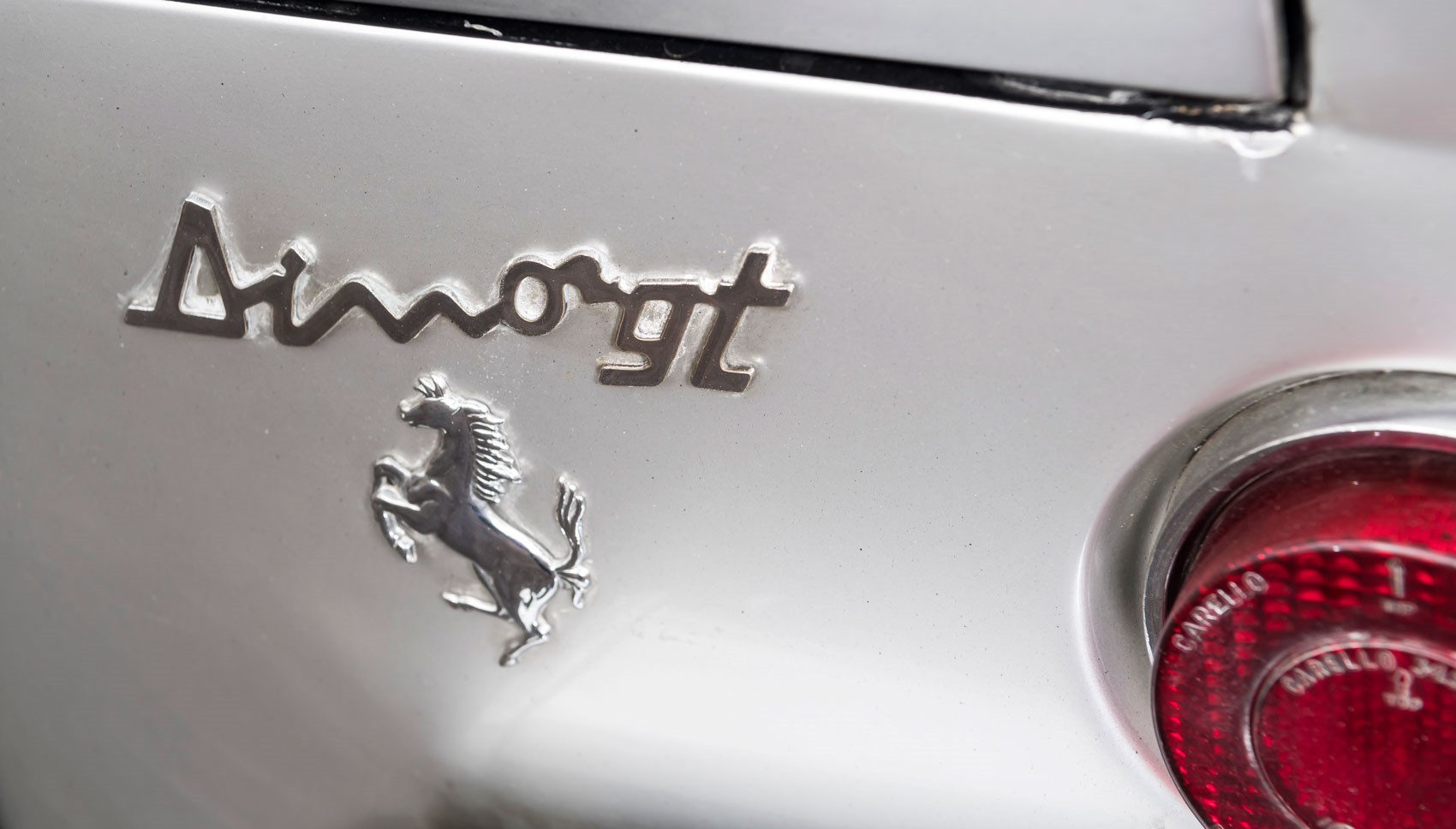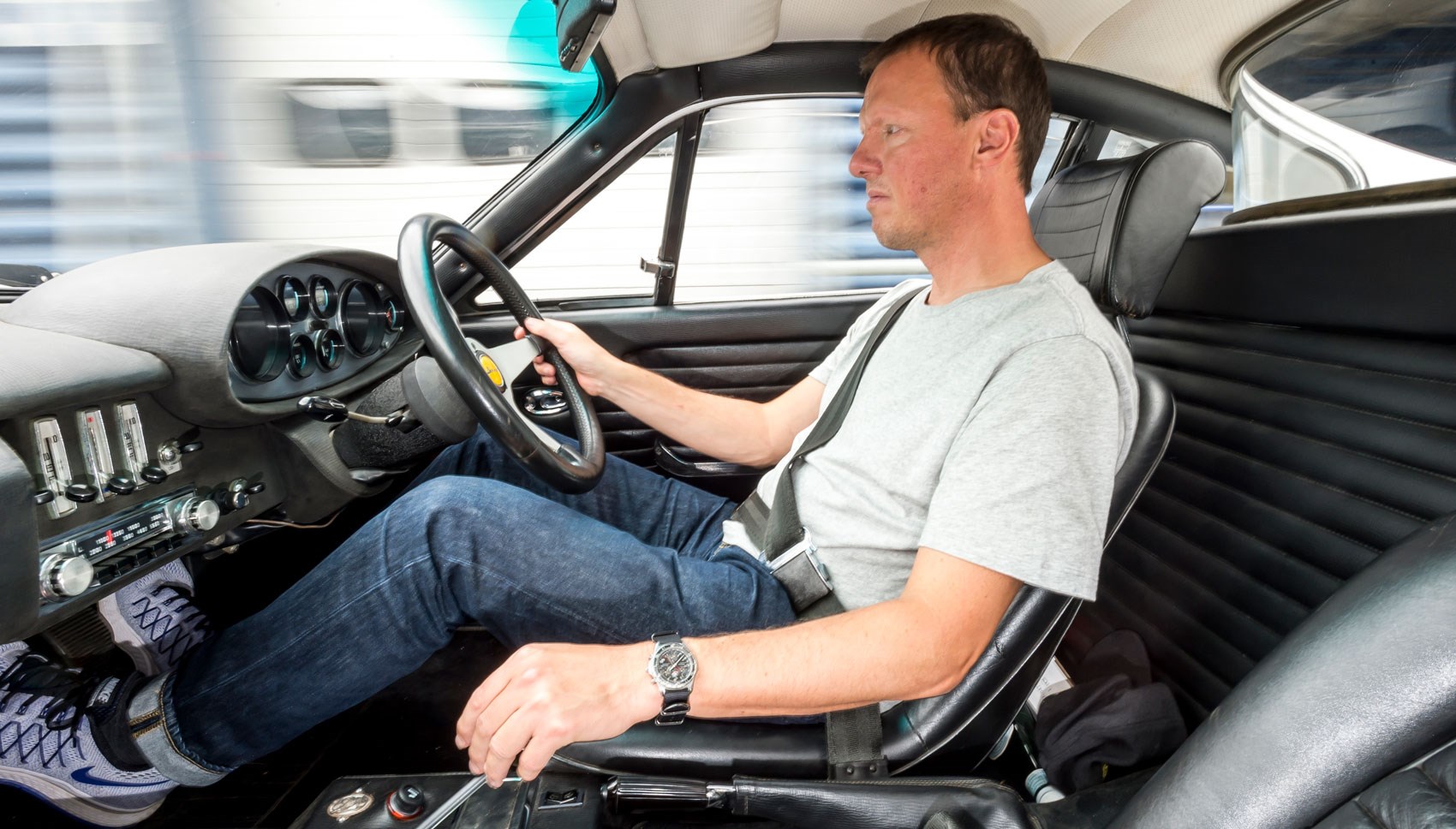► Driving the classics: Dino
► A 1972 Dino GT
► Named after Enzo’s son
Two eras of Ferrari come together in the gorgeous Dino 246 GT. Its arresting shape harks back to the sports racers of the ’50s, when alloy was stretched over a tubular chassis and production runs could be counted on one hand.
At the same time its mid-mounted engine, radical in its day, soon became the only configuration in town, as Ferrari went all mass-production and Miami Vice. The Dino is ’50s meets ’80s, old school and new broom, a genuine watershed in Ferrari’s history.
It’s also tiny, compared to every modern car. Spring open the door with a little chrome latch on the window frame, and the interior opens like a dark pocket of leather and alloy. It’s inviting – the lack of a centre tunnel gives the footwell a wide-open feel, and everything is slender and finely made, like a good-quality champagne flute.
But seriously, you have to understand – the roof is down at belt-buckle height, and when you slip into the driver’s seat, you can casually hold out your left arm and touch the passenger door. It’s like it was built three-quarter scale. Leaning back, leather rim in your hand, breathing that musty classic car ambience, it’s a little cocoon of cool.
This example was made in 1972. It’s a 246 GT, one of 522 right-hand-drive UK cars, out of a total production run of roughly 2500 GTs and 1300 GTS targas. It’s also one of only 59 painted Argento Silver. Its owner, David Crowther, bought it in 1993, and he’s its third owner. ‘I was looking for either a Dino or a Daytona,’ explains David.
‘At the time, the money wasn’t a lot different. In the end, I chose the Dino – it’s such a nimble car, which the Daytona never was, and I was swayed by its gorgeous looks and sound, and by its innovative mechanical design.’

The fact that anyone would have a Dino and a Daytona on the same shopping list might have surprised Enzo Ferrari. He felt a big V12 was an indivisible part of the Ferrari DNA, and his new V6 was considered something of a sub-brand. That’s why it was never badged a Ferrari, always a Dino – named in honour of Enzo’s son Alfredo (known as Alfredino) who died of muscular dystrophy in 1956 aged 24.
Before he died, Alfredo worked with Ferrari’s
in-house engineering genius Vittorio Jano on a small V6 for
Formula 2 racing. When he passed away, his dad named the engine after him, and all the V6 cars that followed. Of course, the idea of the Dino being sub-anything seems crazy now – prices have rocketed north of £350k over the last decade.
Stick the mouse’s front door key into its microscopic chrome slot and turn – the engine fires lustily and idles unevenly compared to modern cars, but it’s full of confident life. This 2.4-litre V6 has three Weber carburettors, which, when opened wide, produce 192bhp. If that sounds disappointing, bear in mind the Dino only weighs 1080kg, which means a power-to-weight ratio similar to a Golf GTI. If that sounds disappointing, you’re forgetting the crucial ingredient: character. Oh my God, character.
The gearbox, for example – the lever click-clacking through that metal gate, engaging with a perfect blend of resistance and precision. Engine noise fills the cabin – this car never hides its mechanical activity – but it’s music to anyone with petrol in their veins. If there were hi-fi knobs to control the sound, the exhaust is the bass and a gearbox whine is the treble; but as you build the revs a crisp song cuts through the middle, an urgent, rising howl that absorbs and amplifies bass and treble into a whole.

And while it’s not supercar fast by modern standards, the engine responds so willingly that the car always feels alert. The small steering wheel comes up at you at something of a go-kart angle, and while there’s a taut discipline to the way the nose responds to your inputs, there’s also movement everywhere. It’s not slack, just a constant adjustment of angles and trajectories; power on, power off, suspension loading and unloading. It feels exhilaratingly alive and sharp.
Engine noise, throttle response, wonderful steering and a heavenly gearbox – the Dino may not be a supercar, but it’s a thoroughbred sports car down to its last nut and bolt; engineering elevated to an art form.